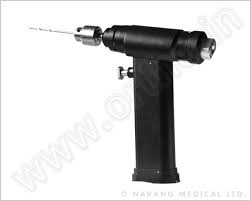A Sterile Surgical Gown is a critical component of personal protective equipment (PPE) used in the operating room to maintain a sterile field and safeguard both patients and healthcare personnel from the risk of infection. These gowns are designed to provide a barrier against microbial penetration, bodily fluids, and other contaminants during surgical procedures.
Sterile surgical gowns are typically made from non-woven, breathable, and fluid-resistant materials, such as polypropylene, polyester, or polyethylene-coated fabrics. These materials are chosen for their durability, comfort, and high level of protection. The gowns are sterilized using methods such as ethylene oxide (EtO) gas, gamma radiation, or steam sterilization, depending on the material and manufacturer specifications.
One of the primary purposes of the gown is to prevent cross-contamination. During surgery, the surgeon, nurses, and other operating room personnel are exposed to blood, fluids, and airborne microorganisms. The sterile gown acts as a barrier to ensure that no bacteria or pathogens from the healthcare provider are transmitted to the patient’s open surgical site and vice versa.
Surgical gowns are available in various sizes and protection levels, typically classified under AAMI (Association for the Advancement of Medical Instrumentation) guidelines from Level 1 (minimal protection) to Level 4 (highest protection). Level 3 and Level 4 gowns are usually used for complex and high-risk surgical procedures, offering the highest fluid and microbial resistance.
The gown’s design typically includes long sleeves with knitted cuffs, a tie or Velcro closure at the neck, and waist ties or belt systems for secure fit. The sleeves are often reinforced, and critical zones like the front panel and arms are constructed with additional layers or laminated materials to prevent fluid strike-through.
Sterile surgical gowns may be disposable (single-use) or reusable, with disposable gowns being more common in modern healthcare settings due to convenience, sterility assurance, and infection control. Reusable gowns, made from woven textiles and treated with fluid-resistant coatings, must be laundered and re-sterilized after each use but are often favored in facilities with sustainability goals.
In addition to surgeons, sterile gowns are worn by scrub nurses, surgical assistants, and anyone working within the sterile field. Donning the gown follows a strict aseptic technique, usually in combination with sterile gloves and face masks.
In conclusion, a sterile surgical gown is not just a piece of fabric—it is a vital protective barrier that upholds the sterility of the surgical environment. Its quality, proper usage, and compliance with safety standards significantly contribute to patient safety and successful surgical outcomes.







Reviews
There are no reviews yet.